
All Star Baseball 2003 is a baseball video game published by Acclaim Entertainment in 2002. The game features Derek Jeter on the cover.

Batman: Vengeance is a 2001 action-adventure video game based on the fictional superhero of the same name. It was released for PlayStation 2, Game Boy Advance, GameCube, Xbox and Microsoft Windows. The game was developed and published by Ubi Soft in conjunction with Warner Bros. and DC Comics.

Dave Mirra Freestyle BMX 2 is a sports video game developed by Z-Axis and Full Fat and published by Acclaim Entertainment under their Acclaim Max Sports label. It was released for the PlayStation 2 in August 2001, and in the following months it was ported to the GameCube, Game Boy Advance, and Xbox video game systems. Both the GameCube and Xbox ports featured two extra levels that were not present in the PS2 version.

ATV: Quad Power Racing 2 is a racing video game developed by Climax Brighton and published by Acclaim Entertainment under their AKA Acclaim label for PlayStation 2, GameCube and Xbox. It's a sequel to ATV: Quad Power Racing. The game is notable for its inclusion of a three-wheeled ATV, not seen in any other video games, and not sold in the real world since the late 1980s.
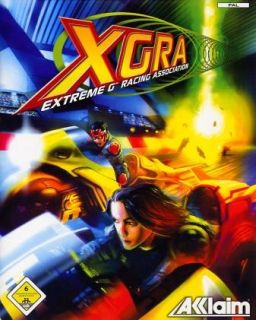
XGRA: Extreme-G Racing Association is a futuristic racing video game, the fourth and final installment in the Extreme-G series, following Extreme-G 3. This game features more tracks as well as a brand new weapon system.
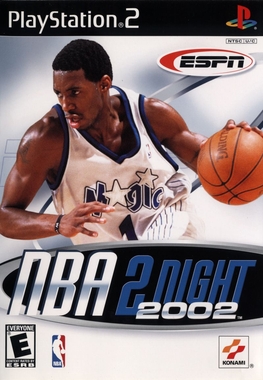
ESPN NBA 2Night 2002 is a video game in the ESPN NBA 2Night Basketball franchise, developed by Konami and released for PlayStation 2 and Xbox. It is a sequel to ESPN NBA 2Night, which had been released for Dreamcast in 2000 and PlayStation 2 in 2001.

Star Wars: Starfighter is a 2001 action video game, developed and published by LucasArts, that takes place right before the Battle of Naboo. The player unites alongside three starfighter pilots and is allowed to take control of several different spacecraft to help stop the invasion that threatens Naboo.

NHL 2002 is a video game released by EA Sports in 2001. It is the predecessor to NHL 2003. The game's cover man is Pittsburgh Penguins superstar and owner Mario Lemieux, who had just made a comeback after being retired for three and a half years. It was the first installment of the NHL series to be released on Xbox.

ESPN MLS ExtraTime is a sports video game released in 2001-2002 by Konami. It is available for PlayStation 2, Xbox, and GameCube. Clint Mathis is on the cover. The original ExtraTime was released for PS2 seven months after ESPN MLS GameNight on the PlayStation, with the GameCube and Xbox versions released in 2002 afterward as ESPN MLS ExtraTime 2002. MLS ExtraTime was the last in the series as the MLS sold its video game license to EA Sports' FIFA series.
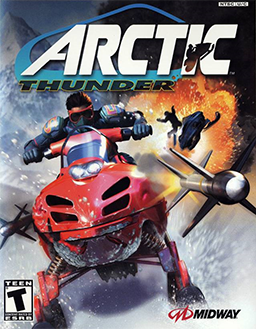
Arctic Thunder is a snowmobile racing game developed by Midway Games. It was released as an arcade game, as well as on the Sony PlayStation 2 and Xbox consoles, and was a launch title for the latter. In the arcade version of the game, jets blow cold or hot winds, depending on the setting, in the player's face during gameplay. Arctic Thunder is part of Midway's Thunder series, which also included Hydro Thunder, 4 Wheel Thunder, Offroad Thunder, and Hydro Thunder Hurricane. The Xbox version of this game is not compatible with the Xbox 360. A Dreamcast port was also planned but was cancelled due to sagging sales of the console.

Lotus Challenge is a racing game developed by Kuju Entertainment and published in 2001 for PlayStation 2 by Virgin Interactive. Versions followed for Windows, GameCube, Xbox, and mobile phones from different publishers.

MLB Slugfest 2003 is a baseball video game published by Midway Sports in 2002. It is the first game in the MLB Slugfest series. Alex Rodriguez from the Texas Rangers is the cover athlete.

NCAA Football 2003 is a video game of the sports genre released in 2002 by EA Tiburon. Its cover athlete is former Oregon Ducks quarterback Joey Harrington.
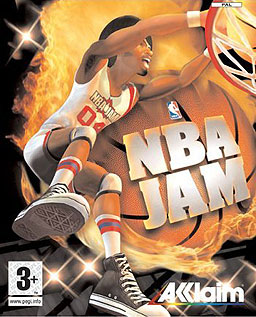
NBA Jam is a 3-on-3 basketball video game published by Acclaim Entertainment for the PlayStation 2 and Xbox in 2003. It is part of the NBA Jam series. The game was announced on May 12, 2003. The play-by-play is voiced by Tim Kitzrow. There was also originally to be a GameCube version of the game.

NASCAR Heat 2002, sometimes mislabeled as NASCAR Heat, is a NASCAR video game produced by Infogrames for the Xbox, PlayStation 2, and Game Boy Advance consoles. It is the successor to the 2000 game NASCAR Heat, and the predecessor to NASCAR: Dirt to Daytona. NASCAR Heat 2002 can have up to 24 (PS2) or 43 racers on one of 19 official NASCAR tracks, and the game was released in June 2001 for PlayStation 2. A port for the Xbox was released in November 2001. Developed by Crawfish Interactive, a distinct version for Game Boy Advance was released in May 2002.

The Red Star is a third-person action video game, based on The Red Star graphic novel.
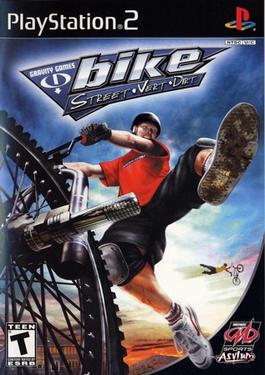
Gravity Games Bike: Street Vert Dirt is a sports video game developed and published by Midway for the PlayStation 2 and Xbox. It was released in North America on June 27, 2002 for the PlayStation 2 and on September 4, 2002 for the Xbox. It was the only game released under the Gravity Games license by Midway.

Blade II is a 2002 action beat 'em up video game developed by Mucky Foot Productions and published by Activision for the PlayStation 2 and Xbox. Originally scheduled for North American release on the same day as the theatrical release of the 2002 film of the same name, it was ultimately released on September 3, the same day the film was released on DVD.

ESPN NBA 2Night is a video game developed and published by Konami for Dreamcast and PlayStation 2 in 2000-2001. A sequel, ESPN NBA 2Night 2002, was released in 2002 for the PlayStation 2 and Xbox.
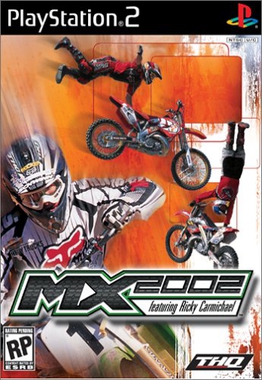
MX 2002 featuring Ricky Carmichael is a video game developed by Pacific Coast Power & Light and published by THQ for the PlayStation 2, Xbox and Game Boy Advance in 2001. It is the third motocross racing game published by THQ to be endorsed by professional motorcross racer Ricky Carmichael, after Championship Motocross featuring Ricky Carmichael and its sequel, Championship Motocross 2001 Featuring Ricky Carmichael, as well as the first game in THQ's MX trilogy, a follow-up series to the Championship Motorcross duology that would eventually become part of its MX vs. ATV crossover racing franchise. A sequel, MX Superfly, was released in 2002 and also endorsed by Carmichael.




















